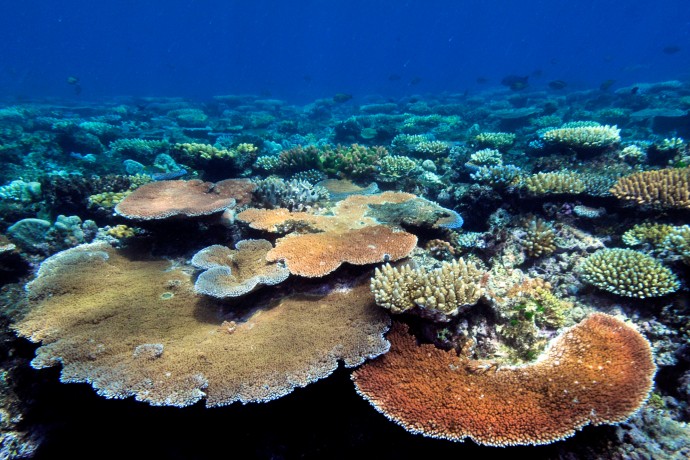Hard coral connectivity
What are hard corals and why they are important?
Hard corals are foundational species on coral reefs. Through the production of calcium carbonate skeletons, hard corals create the physical substrate and three-dimensional structure that supports the vast diversity of organisms that comprise coral reef ecosystems. While they build physical structures that can tower hundreds of metres above the seafloor and create oceanic barriers thousands of kilometres in length, corals are actually simple animals closely related to jellyfish. The elaborate and colourful colonies that make coral reefs such attractive destinations for tourism are comprised of hundreds to millions of individual polyps, each of which is a clonal copy of the original, single polyp that first settled out of the plankton. It can take 5-10 years for most corals to grow from a single polyp to a mature colony capable of reproducing the next generation. During these years, corals must survive a range of threats including predation, overgrowth, physical smothering and pollution.
Key concepts that relate to connectivity
The process of reproduction in corals generally involves eggs and sperm from mature colonies mixing in the water column during periodic (often annual) spawning events. Fertilisation leads to a larva, which drifts (largely passively) with ocean currents until it is ready to settle onto a suitable area of reef substrate. Some coral species produce larvae which have very short planktonic phases and often settle within metres of the parent colony (brooding species). Most others have larvae which drift for weeks or months (broadcast spawners), creating biological connections between reefs that can be tens to hundreds of kilometres apart.
For corals, the patterns of larval connectivity between reefs are fundamental to determining species’ ranges and distributions, and to the probability and rates of recovery of populations after mortality events. The processes that determine connectivity (mostly ocean current direction and strength) link coral populations between the Great Barrier Reef and all adjacent jurisdictions.
A range of threats can compromise connectivity, including chemical spills, degraded water quality and extreme temperatures. The dependence of many reefs on upstream (source) reefs for supply of larvae also means that the condition of corals in one jurisdiction may be important to the sustainability of coral populations in an adjacent jurisdiction.





